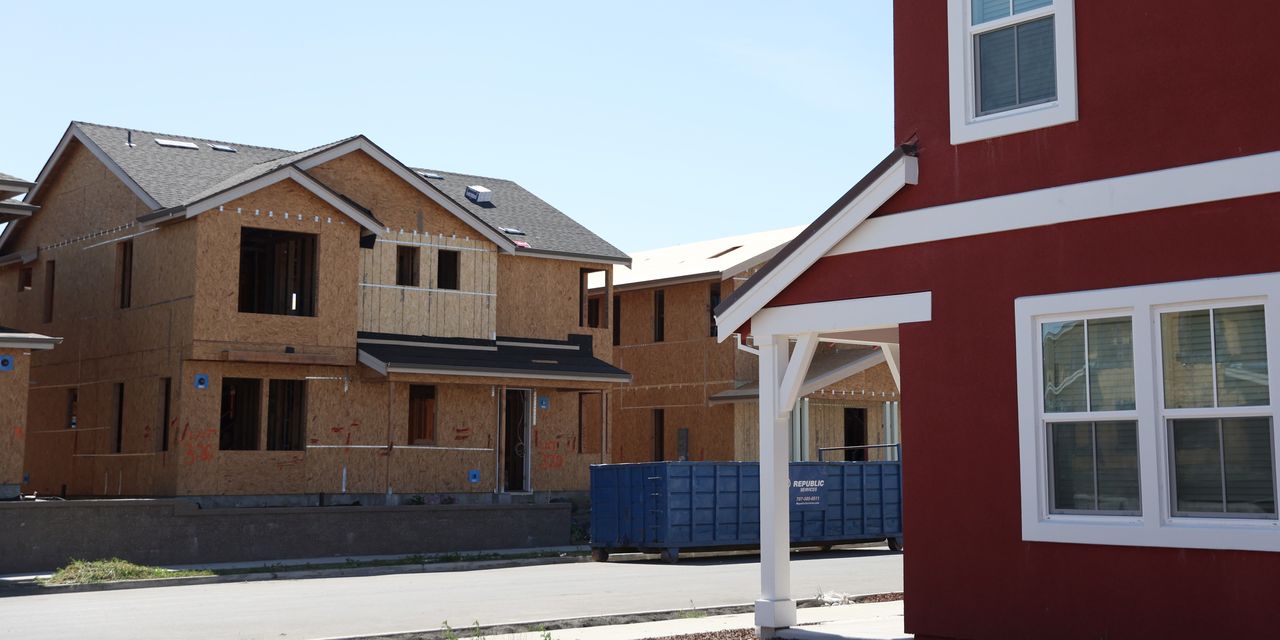Mortgage rates have surged to 20-year highs of more than 7%, and are poised to rise even further. But buyers of new homes aren’t necessarily feeling the pinch.
Higher mortgage rates add hundreds of dollars in extra borrowing costs for an aspiring homeowner looking to purchase a home. But buyers of newly built homes are enjoying lower mortgage rates, as home builders offer lower rates.
In fact, some buyers of newly built homes are getting mortgages that have a rate of less than 6%, John Burns, CEO of John Burns Real Estate Consulting, wrote on LinkedIn this week.
That’s because “most large home builders are allocating 4%-6% of the home-sale proceeds toward buying down the mortgage rate, permanently, for their buyers,” Burns said.
“‘Most large home builders are allocating 4%-6% of the home-sale proceeds toward buying down the mortgage rate, permanently, for their buyers.’”
They can afford to do so because they have seen their profit margins rise in the last few years, Burns explained, as well as due to a drop in lumber prices, which helps lower the cost of construction.
“Giving back 4%-6% of the price to keep sales strong is the smart thing for them to do,” Burns added.
That’s one of the key reasons why new home sales are higher than existing-home sales. Existing-home sales are at a six-month low, as few homeowners are listing their homes. The number of single-family homes listed on the market in the month of July, as compared to same time during prior years, was at the lowest since the 1980s.
New home sales have only slowed down in 12% of the largest markets in the U.S., according to Burns’ research.
How the mortgage-rate buydown works
Many aspiring homeowners rely on mortgages to finance their purchase of a home, and every rise and fall can add or subtract hundreds of dollars in borrowing costs. Rates also have an impact on a buyer’s buying power.
Buydowns can be permanent or temporary. Mortgage products like the 3-2-1 temporary rate buydown, for example, offer lower rates in the first few years of repayment, after which they permanently reset to the higher market rate.
The 3-2-1 temporary rate buydown works like this: When a seller or builder pays some amount of money upfront to buy the rate down, that rate goes from approximately 7% — where it is today — to 4% at the start of the payment period. Then, after a year, that rate goes up to 5%; the following year 6%; and then 7%.
Or a seller can offer a 2-1 buydown, which has two periods of adjustment: It begins at 5%, then 6% after a year, then 7% or market rate.
Generally, these rate buydowns are paid for by the home buyer, where they set aside part of their down payment, or the home seller or homebuilder can offer it as a negotiating tactic.
Rising rates reduce buying power
With the 30-year hovering around 7.25%, a homeowner who has a budget of $3,000 per month to spend on housing can only afford a $429,000 home today, Redfin said. If they had bought last year around the same time period, their rate would have been around 5.5% on average, and been able to buy a $500,000 home with the same budget.
The figures assume that the buyer is putting 20% down, using a 30-year mortgage, paying a property tax rate of 1.25%, homeowners insurance rate of 0.5%, and no homeowners association fees.
Builders such as D.R. Horton and Lennar have been leaning on rate buydowns to offer a lower 30-year mortgage rate for their buyers. And they’ve had success thus far, based on recent updates in their earnings calls from these companies.
“The rate buydown for us has been an effective incentive,” Paul Romanowski, executive vice president and chief co-operating officer at D.R. Horton
DHI,
said on the company’s third-quarter earnings call last month.
“We have stayed roughly a point below the market, and we’ll have to measure that as we move forward depending on where rates move, whether that be up or down,” he said. “But we have found it to be one of our most effective incentives, and we have been consistent in that execution.”
“We can buy down mortgage rates where the resale market can’t,” Jon Jaffe, co-CEO and president of Lennar
LEN,
said on the company’s second-quarter earnings call in June. “So, if we need to accelerate our sales pace [that] the market is giving us, we have that lever that we can pull that’s at our disposal.”
Read the full article here





